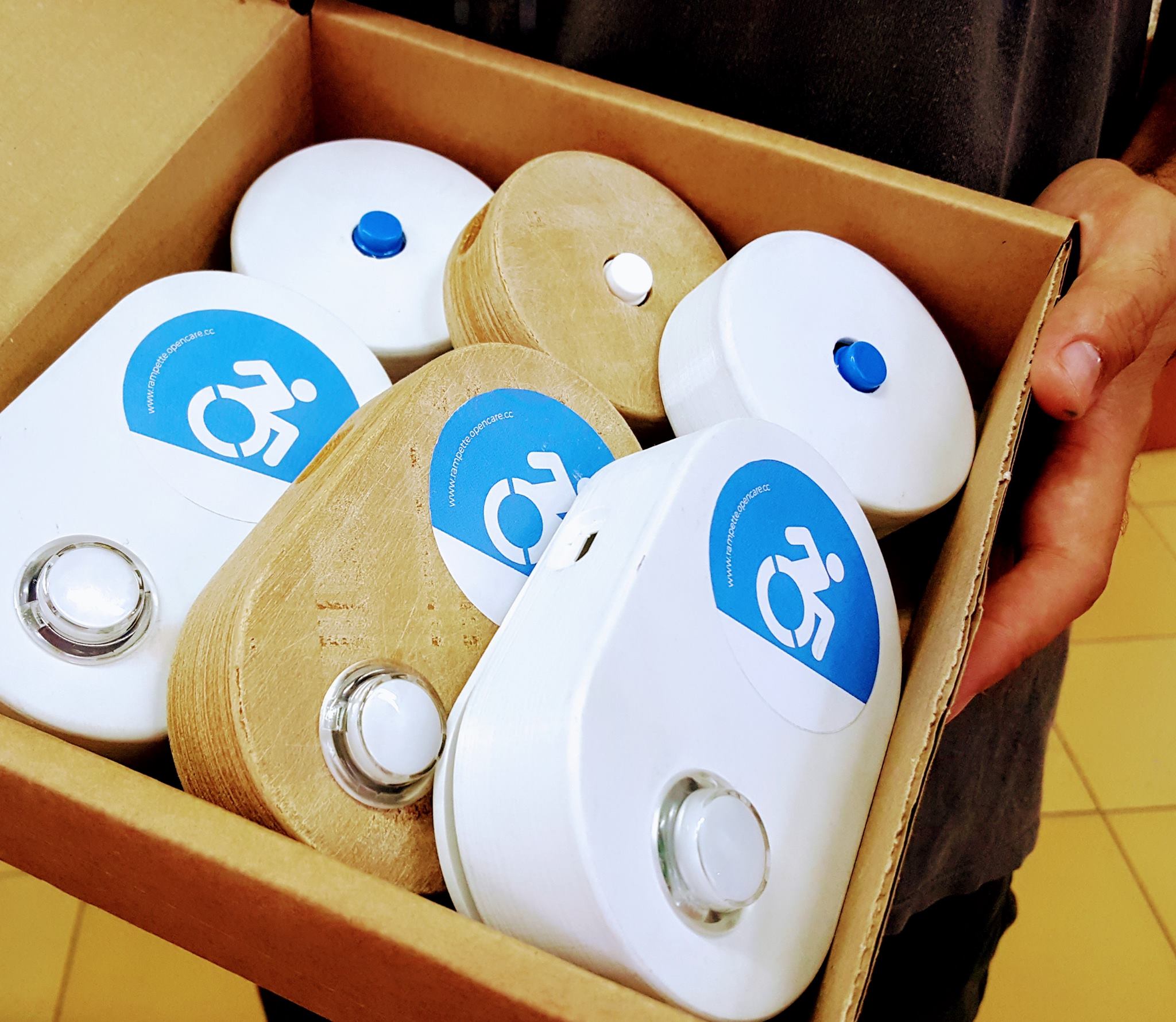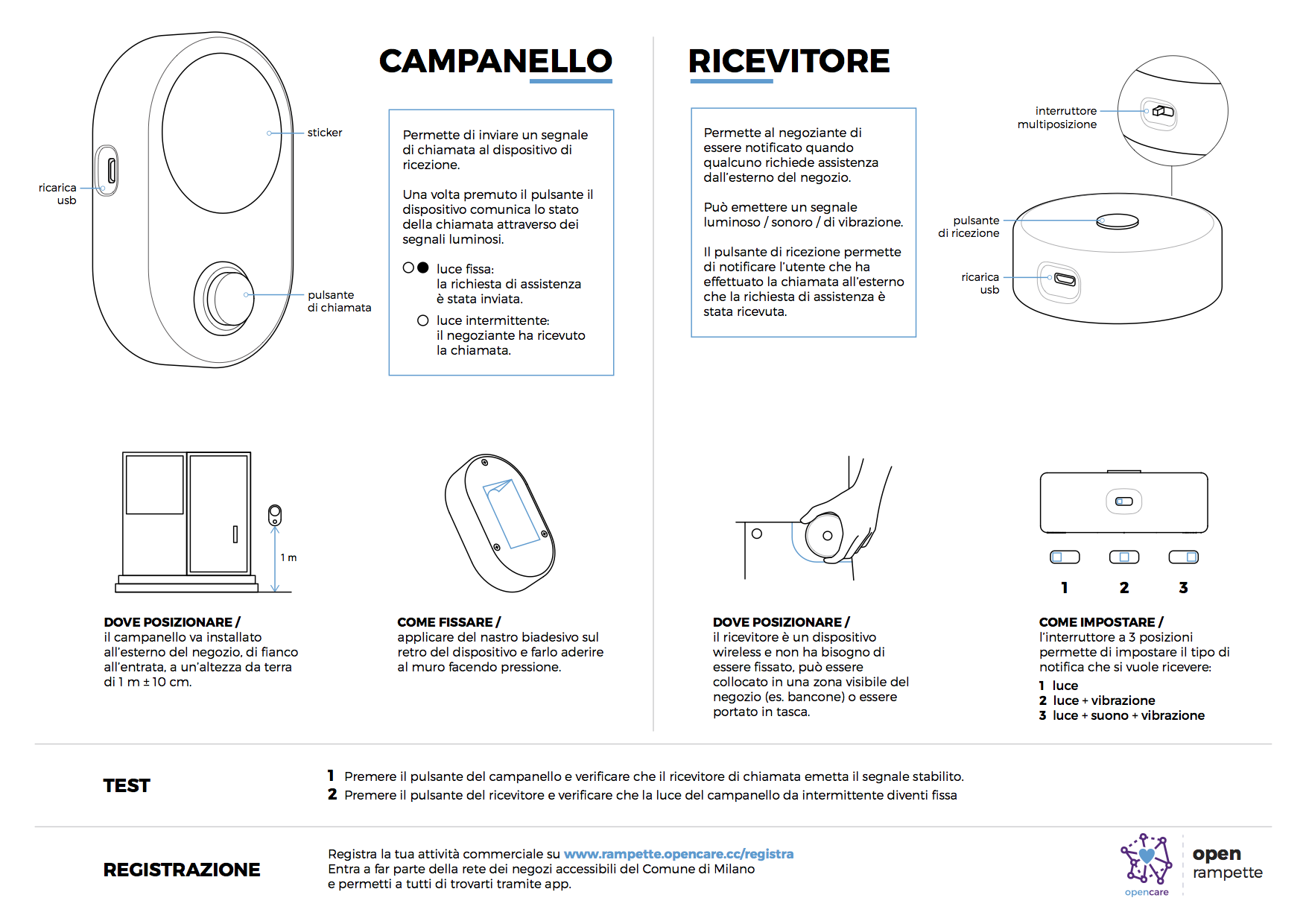Hello open rampette followers!
The last update was about the prototypes selection, now we would like to share with you what’s happened in the last period.
We have been quite busy lately doing what makers do: programming, soldering, 3d printing etc… we built several doorbell prototypes and an app that let the user perform the call via Bluetooth.


From July 19 to July 26 it has been a super intense week, during which we started a new experience with the community. We have got in touch with several shopkeepers based in Isola district in Milan who already have “accessible” shop, and we asked them the availability to take part in the user testing of the prototypes. Once they accepted our proposal, we gave them all the technical information and we installed in their shops the devices:
- The doorbell with the sticker on it to identifies the project
- The custom device to receive the doorbell call
- Moreover we created a full instruction sheet.

TESTING THE DOORBELL WITH THE SHOPOWNERS
During the week the shop owners and the citizens had the opportunity to test the system proposed and reflect on advantages and the pain points.
At the end of the seventh day we interviewed the shopkeepers and about their experience with the new prototype. It was a very precious moment to collect a lot of interesting feedback to better understand what features should be improved and what already works well. In summary, the doorbell was valued quite positively from the shop owners:
- The doorbell is easily visible by the street.
- The sticker placed on the doorbell is really clear, it works well to communicate accessibility. Waiting for the implementation of the final products, the shopkeepers are available to place the sticker outside their shop.
TESTING THE DOORBELL WITH DIONISO
On the same day we met one of our Dioniso, he reached us in order to test our solution in two different ways:
- Calling the shop through the doorbell.
- Using the app, which notifies him the presence of the accessible shop and allows him to request assistance directly from the smartphone.
In both these cases, the process worked smoothly and Dioniso was pleased to give us his impressions.
Generally speaking, the device was appreciated by our Dioniso: He highlighted that the proposed solution is way more effective than the former doorbell:
- It is more visible.
- It clearly indicates its function.
- And moreover helps in communicating that the shop is ready and willing to put down a ramp if he asks for help
Dioniso confirmed our assumption regarding the app:
- It’s a functional solution for people with limited movement capabilities of the arms and the others in general.
- It could be useful for shops where the doorbell is badly, or where a big step create an obstacle between Dioniso and the bell itself.
We couldn’t test the app with any user that uses voice commands to control his smartphone, but the test done at the lab using Android Accessibility Features with voice control went very well. We were able to use the app and call for assistance without touching the screen at all 
FUTURE IMPROVEMENT
The test helped us also realize that some features that seemed very important during the user research were not so relevant in the end.
- In every flow we proposed, we stressed the aspect of giving a clear feedback about the reception of the call for assistance; During the test we realized that it is not that relevant, as people use the bell in the way they are used to and don’t expect it to light up in different ways to highlight different statuses.
- We put a lot of effort in creating a device with a “silent” mode, using just light and vibration, and unfortunately we had just a very little time to work on the fundamental “loud speaker” feature. In the end, we developed a very silent doorbell receiver, that is not really appropriate in most circumstances.
- Since several people expressed during the research that they have shops with several rooms, we thought that creating a portable device could have been the solutions for all. However, a device that you carry around is easy to forget on a remote desk. For the future implementation, we recommend adopting the strategy of having multiple receivers to spread around the shop.
Generally speaking the most important confirmation we had from the prototype was about the importance of effectively communicating the accessibility of the shop.
While we really like the doorbell we designed, it could be interesting to try an hybrid and definitely “cheaper” solution using the sticker with an off the shelf wireless doorbell already adopted in many in of the town.